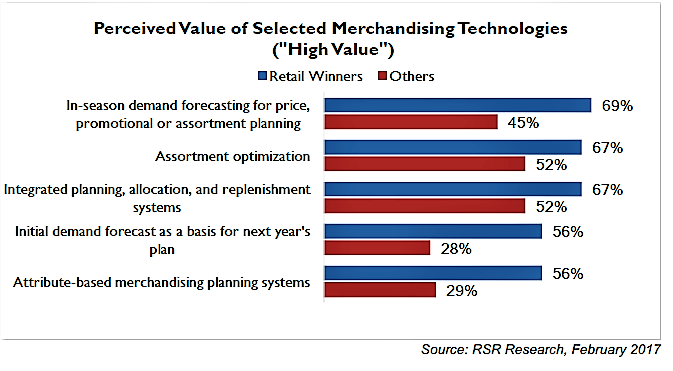Until recently state-of-the-art for trade area analytics still meant analyzing historical store sales by location, together with some Nielsen market data to select merchandise assortments and allocation. Contrast that with the upcoming holiday season where retailers know where and how demand is initiated, and use that new understanding to create more focused, even personalized value offerings. Consider these examples:
- Analyzing viral YouTube content for trending consumer sentiment, overlaid with pinpoint location demand analysis for site selection and assortment optimization of pop-up retail outlets, e.g. the Amazon Treasure Truck.
- Delivering tailored, next-best-offer ideas via augmented reality for high-fashion or home decorating merchandising.

Such disruptive and important merchandising tools are already part of the omnichannel customer journey. And today's retail leaders recognize that a new generation of demand signals are guiding merchandising decisions.
Recently, SAS discussed some of these and other new ideas with a group of high-achieving, fashion-minded millennials from the Fashion Institute of Technology (FIT). The meeting included students from FIT's Fashion Business Management program, part of the Business and Technology School, along with Schools of Advertising Marketing & Communications, and Textile Development and Marketing. Students were especially interested in emerging trends in omnichannel marketing, social media impact, and analytics around fashion fit and quality. And, as you can see from the photos below, our virtual reality store demo was a hit too.
What makes for a retail winner in omnichannel analytics?
Meeting the challenge of today’s omnichannel consumer journey has forced retailers to rethink their customer engagement strategy and touch points during the path to purchase. SAS recently engaged wit.h Retail Systems Research (RSR) to study this topic, and the collaboration yielded some intriguing insights RSR is the only research company run by retailers for the retail industry and they provide insight into business and technology challenges facing the retail industry.
In Merchandising & The Omnichannel Impact study, RSR explains that, “Consistent sales performance is an outcome of a differentiating set of thought processes, strategies, and tactics." We call these sales over-performers 'Retail Winners.'"
The challenges to consistent robust omnichannel retail growth include the hyper-promotionalism and escalating consumer expectations that stores and online destinations will have tailored assortments just for them, resulting in new pressure to order and allocate the right mix of product in the right quantity, in the right location.
When study participants ranked the most important factors in their retail success, the leading characteristics were customer analytics, retail demand forecasting, and localized assortments. However, the findings show that retail winners go beyond “checking the box” and internalize how they can best leverage analytics to get the most from these capabilities. Other findings included:
- Customer analytics are just as important as product sales trends and rankings, and should be conducted early in the Demand Forecasting process.
- Demand forecasting, done at new degrees of granularity and based on new signals, can expose demand and fulfillment differences across locations and channels, reducing inventory costs and expedited shipments, better on shelf performance, and higher customer satisfaction.
- Localized assortment optimization based on Integrated attribute-based planning, allocation, and replacement systems that base merchandise plans on where demand was sourced, not where it was fulfilled are core technologies of Retail Winners.
Omnichannel retail success continues to be a blend of art and science. Omnichannel should be seen as an opportunity and a potential competitive advantage, not an operational challenge. While advanced analytics like trade area, demand signal, and unified customer insights aren’t magic bullets, by taking the time to learn what they can do for your organization and internalizing them into your company DNA, they are a formula for success that all retailers should be investigating.
Who will be this holiday’s retail winners?
Learn more by reviewing the full report and let me know what other omnichannel strategies you are seeing ahead of the upcoming holiday season. Will the Walmart / Jet.com combination provide enough lift to counter Amazon? What role will shoppable tags on sites like Instagram play in driving higher mobile purchases? Give me your thoughts and tell us who you think will be retail winners this year in the comment section below.





